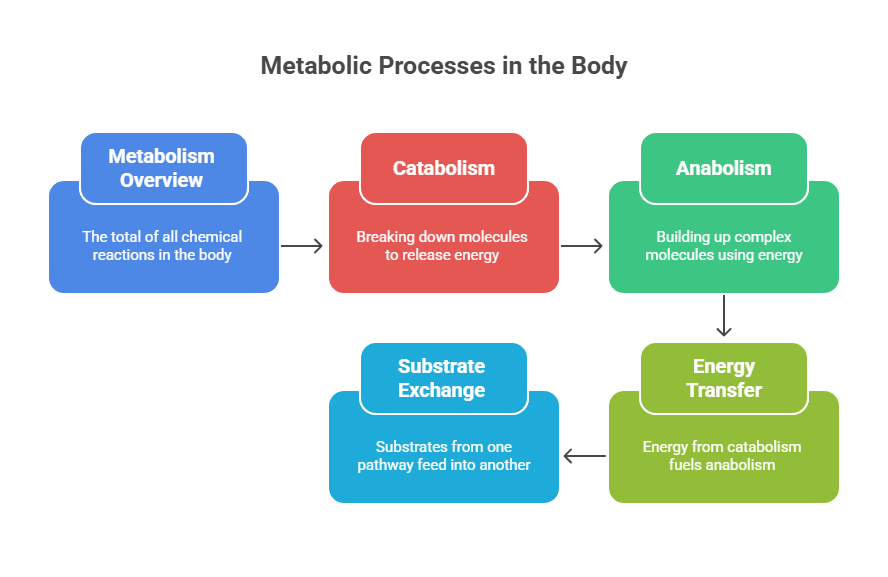

Anabolism vs Catabolism)
As a medical student, understanding metabolism is essential. It’s not just a topic in biochemistry — it’s a framework that explains how the body uses, stores, and produces energy. Every cell in the body is constantly carrying out thousands of chemical reactions. These reactions are organized into pathways that either build things up or break things down. These two directions are what we refer to as anabolism and catabolism.
What is Metabolism?
Metabolism is the total of all chemical reactions that occur in living organisms to maintain life. These reactions are carefully regulated to meet the body's energy needs and maintain cellular structure and function.
Metabolism is broadly divided into two complementary processes:
Catabolism – breaking down molecules to release energy
Anabolism – building up complex molecules using energy
Both processes are interconnected. The energy released from catabolism fuels anabolic reactions, and the substrates of one pathway often feed into another.
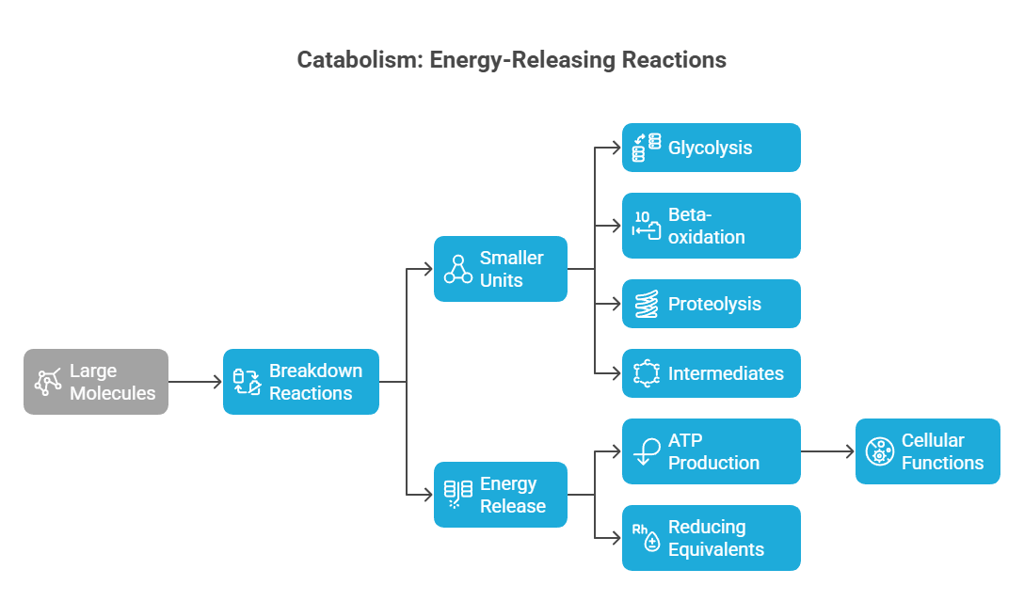

Purpose:
Provide ATP for cellular functions.
Supply intermediates for other reactions (e.g., acetyl-CoA for the TCA cycle)
Generate reducing equivalents (NADH, FADH₂) for the electron transport chain.
Catabolism becomes especially active during fasting, illness, or exercise, when the body needs to mobilize stored energy.
Catabolism: Energy-Releasing Reactions
What is it?
Catabolism is the breakdown of larger molecules (like carbohydrates, fats, and proteins) into smaller units (like glucose, fatty acids, and amino acids). These breakdown reactions usually release energy, which the cell captures in the form of ATP (adenosine triphosphate) and other high-energy compounds.
Examples:
Glycolysis: Glucose → pyruvate
Beta-oxidation: Fatty acids → acetyl-CoA
Proteolysis: Proteins → amino acids → urea + carbon skeletons
Understanding Anabolism and Its Importance
🧬 Anabolism: Energy-Using Reactions
What it is:
Anabolism is the synthesis of complex molecules from simpler ones. These reactions require energy input, typically in the form of ATP. Anabolism is dominant when nutrients are abundant, particularly after eating.
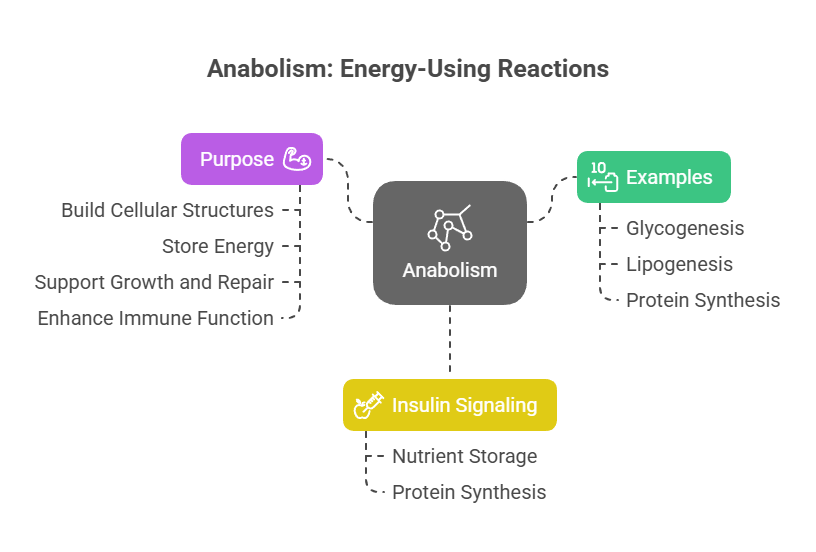

Examples:
Glycogenesis: Glucose → glycogen (stored in liver and muscle)
Lipogenesis: Acetyl-CoA → fatty acids → triglycerides
Protein synthesis: Amino acids → proteins
Purpose:
Build and maintain cellular structures
Store energy for future use
Support growth, repair, and immune function
Anabolic activity is closely tied to insulin signaling, which promotes nutrient storage and protein synthesis in the fed state.
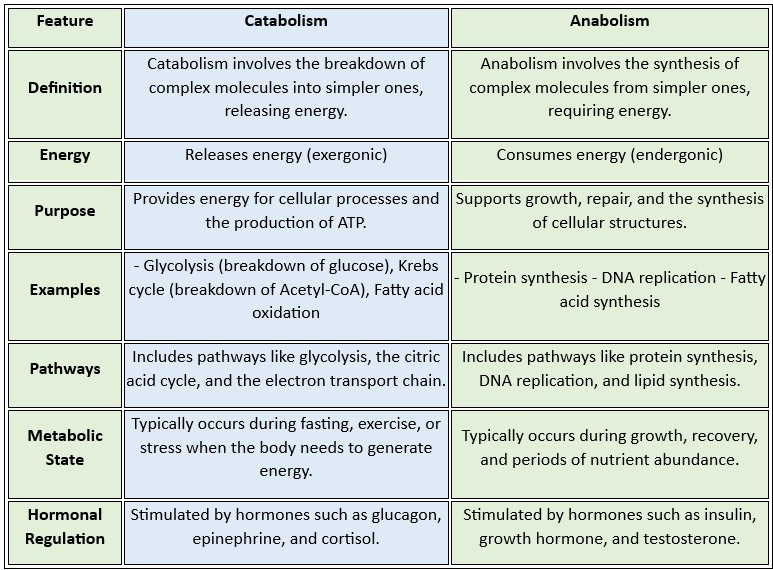

🧭 Interconnection: How Catabolism and Anabolism Work Together
These two systems are not independent. They’re in constant communication and are tightly regulated by hormones, nutrient levels, and energy demand.
When energy is needed, catabolism dominates.
When energy and nutrients are plentiful, anabolism takes over.
One key principle: The same pathway is not used for both directions.
For example:
Glycolysis and gluconeogenesis are not exact reversals of each other. They have distinct enzymes at key steps to allow independent regulation.
Catabolism vs Anabolism
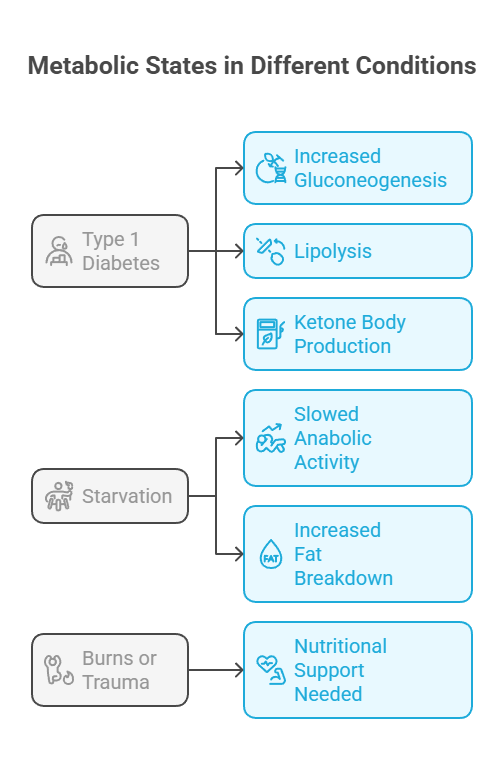

Clinical Relevance
Understanding this balance is crucial in medical practice:
In Type 1 Diabetes, the lack of insulin tips the body into a catabolic state — increased gluconeogenesis, lipolysis, and ketone body production, even when glucose is high in the blood.
In starvation, the body adapts by slowing down anabolic activity and increasing fat breakdown to preserve glucose for the brain.
In burns or trauma, the body enters a hypercatabolic state, requiring nutritional support to prevent muscle wasting.
Metabolic State in Different Conditions


Final Thoughts
Metabolism is not just a list of pathways — it’s the biological economy of the body.
Understanding the difference between anabolism and catabolism, and how they respond to different physiological states, is foundational to clinical biochemistry, nutrition, endocrinology, and internal medicine.
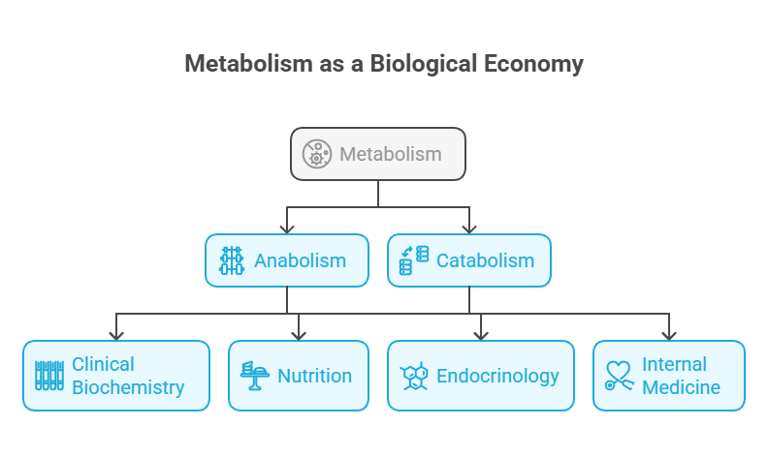

BLOG
Join us to explore medical biochemistry intricacies.
WRITE TO US
© 2024. All rights reserved.
